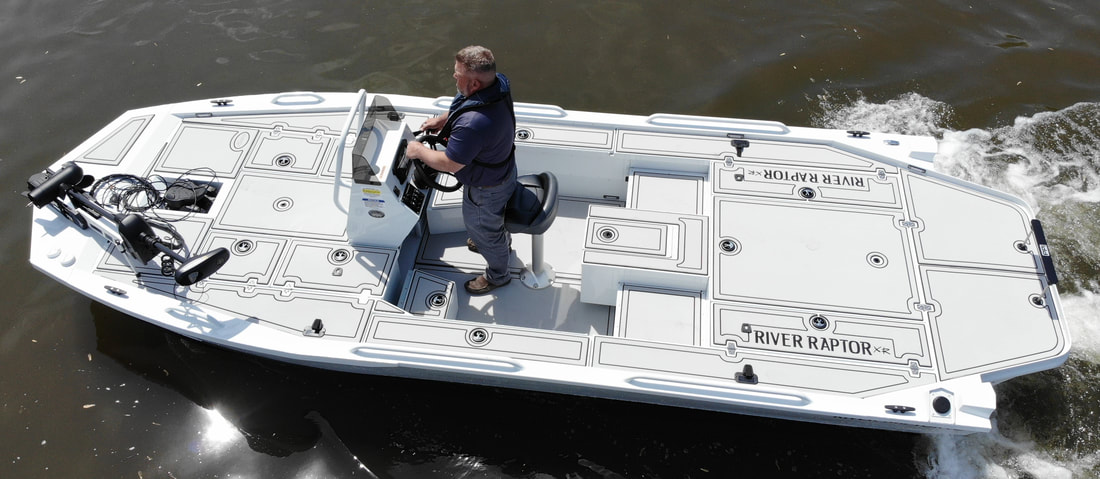Forged To Float: Metal Boats
In the world of watercraft, boats are perhaps the most ubiquitous. However, not all boats are created equal. Over the centuries, boat design and construction materials have evolved, from wooden hulls to fiberglass, and more recently, to metal. Today, we dive into the history, evolution, and intricacies of metal boats. We'll explore the major manufacturers, their models, specifications, and engine options, and delve into the pros and cons of metal boats as discussed in notable boating magazines.

The History of Metal Boats
The history of metal boats is as rich and varied as the seas they navigate. The introduction of metal boats can be traced back to the early 19th century, with the advent of the Industrial Revolution. In the 1830s, iron, and later steel, became popular materials for shipbuilding due to their strength and durability. The SS Great Britain, launched in 1843, is often cited as the first iron steamship to cross the Atlantic.
It wasn't until the mid-20th century that aluminum, a lightweight, corrosion-resistant metal, began to gain popularity for recreational boating. The affordability, strength, and lightweight nature of aluminum made it an attractive choice.

Metal Boat Manufacturers and Their Offerings
Alumacraft Boat Co.
Alumacraft, an American company established in 1946, is widely recognized for its aluminum boats. One of their notable models is the Alumacraft Trophy 205, a fishing boat with a length of 20' 8" and a 98" beam. It offers ample storage, a high windshield, and a hydraulic steering system. Engine options range from 150 to 250 horsepower.
Lund Boat Company
The Lund Boat Company, established in 1948, is another top-tier aluminum boat manufacturer. Their Pro-V series is a favorite among sport fishermen. The Pro-V 1875 has a length of 18' 10", a 96" beam, and features a center rod storage area, livewells, and advanced fishing electronics. It offers engine options up to 200 horsepower.
Pacific Boats
Pacific Boats specializes in aluminum boats designed for rough waters. Their 23-foot Pacific 2325 model is known for its ruggedness and durability, featuring a 102" beam and a hull thickness of 1/4". Engine options range from 150 to 300 horsepower.

Metal Boat Construction Vs. Fiberglass
When comparing metal boat construction to fiberglass, several factors come into play.
Metal boats, particularly aluminum ones, have several advantages. They're lightweight, durable, and resistant to UV rays and saltwater corrosion. They also require less maintenance than fiberglass boats. Unlike fiberglass, minor dents and dings in aluminum can often be repaired by the owner.
Fiberglass boats, on the other hand, offer a smoother finish and more flexibility in design due to the moldable nature of fiberglass. They are also typically quieter on the water, as fiberglass can absorb sound and vibration better than metal.
As boating magazine Boat International notes, "The choice between metal and fiberglass comes down to a balance of factors. Aluminum boats provide ruggedness and easy maintenance, making them ideal for heavy use and harsh environments. Fiberglass, meanwhile, offers design flexibility and a quieter ride, which may appeal to recreational boaters."

Pros and Cons of Metal Boats
Boating World magazine has extensively reviewed the pros and cons of metal boats. According to them, the main advantages of metal boats are their durability and low maintenance. Metal boats can withstand harsh conditions and rough handling.
On the downside, metal boats can be noisy due to water slapping against the hull.
Continuing with the cons, metal boats, particularly steel ones, are prone to corrosion, especially in saltwater environments. They require protective coatings and regular inspections to prevent rust and other forms of corrosion.
Despite these drawbacks, metal boats, and in particular, aluminum ones, have a unique set of benefits that make them a favored choice for many boaters. As noted by Boat Magazine, "For those looking for a durable, maintenance-friendly, and practical boat, it's hard to beat aluminum. It's the go-to choice for many fishers and watersport enthusiasts."
Other Notable Metal Boat Manufacturers
Crestliner Boats
Crestliner Boats, a division of Brunswick Corporation, is known for its high-quality aluminum boats. The Crestliner 1750 Fish Hawk, a multi-species fishing boat, stands out for its spaciousness and fishability. The boat measures 17' 9" in length, with a beam width of 95". Engine options range from 90 to 150 horsepower.
Tracker Boats
Tracker Boats, the first company to sell boats as part of a ready-to-fish package (including motor and trailer), is another leading manufacturer of aluminum boats. Their signature model, the Tracker Pro Team 190 TX, is praised for its performance and value. It has a length of 18' 7", a 94" beam, and comes with a factory-rigged 75 to 115 horsepower Mercury outboard.
Safe Boats International
Safe Boats International is a manufacturer specializing in aluminum boats designed for law enforcement, military, and emergency response operations. Their SAFE 250 Center Console model, at 25' long and 102" beam, is built for versatility and performance, accommodating a variety of engine options up to 400 horsepower.

Concluding Thoughts
Metal boats, with their durability, low maintenance requirements, and adaptability, have carved out a significant niche in the boating industry. Whether it's an aluminum fishing boat from Alumacraft or a high-performance craft from Safe Boats International, the options for enthusiasts and professionals alike are plentiful.
That said, choosing the right boat always depends on the individual's needs, preferences, and the conditions they plan to navigate. As Yachting Monthly states, "Each material has its advantages and disadvantages, but metal boats, with their resilience and low maintenance, have proven their worth time and again, especially for those who wish to push beyond fair-weather, near-shore boating."
Whether you opt for a metal or fiberglass boat, the journey on the water is yours to enjoy. The sea does not discriminate – it offers its beauty and challenges to all who dare to navigate its vastness. The key lies in choosing a vessel that complements your seafaring spirit.
Charlie is Editor-in-Chief of Sea Magazine






